Uramaki
~~~
The "Inside-Out" Maki Roll
Rice on the Outside, Nori on the Inside
Uramaki has a very interesting history.
The story goes that it was developed in Little Tokyo in Los Angeles in the late 1960's by Machita Ichiro the sushi chef in a restaurant called Tokyo Kaikan.
It seems the restaurant was having problems obtaining fat belly tuna (toro) for its mainly Japanese customers so started to substitute avocado instead. Avocado has a similar consistency and tends to melt in the mouth kind of like toro.
Later, when the number of American customers started to increase, some disliked the texture of the seaweed, so Ichiro turned the roll "Inside-Out"; thus putting the rice on the outside, and the seaweed on the inside. Kind of "hiding" it.
This seemed to pacify the American customers and so the California Roll was born.
Rather clever, don't you think?
It must have worked because Uramaki seems to be one of the most popular types of sushi now in the U.S.
Its popularity however has not been duplicated in Japan. The Japanese prefer the texture of seaweed. And since Uramaki tends to fall apart more easily when picked up with chopsticks and dipped in soy sauce they don't prefer it over the traditional Maki roll with the seaweed on the outside.
Uramaki doesn't have to be eaten quite as quickly as the other Maki rolls because the nori is rolled up on the inside of the rice so there are no worries about the nori splitting. The Maki rolls which have the nori on the outside may split after a while because the rice expands over time.
Use this recipe to duplicate most any Uramaki ("Inside-Out") Rolls
Most inside out rolls are made the same way. With a 4 x 7 or 5 x 7 inch sheet of nori, around 1 cup of rice and 2 or 3 ingredients.
This means that you should be able to use this recipe to duplicate a Uramaki roll that you may have had in a sushi restaurant by noting what ingredients and condiments were used in it.
How to make a Uramaki Roll
Ingredients
Sushi Rice (this will yield 4 cups of rice and this recipe 4 rolls)
(Try to buy a high quality Japanese short grain white rice if you can)
To demonstrate a uramaki roll, for this example we will be making a california roll. The ingredients that we will need for this roll are:
4 oz. crab meat preferably sticks or legs (split in half). Each crab stick will be around 1oz.
1/2 salt-scrubbed english (hot house) or Japanese cucumber sliced into slivers
1 avocado (slice avocado right before you are ready to assemble your roll so that it won't discolor)
4 tsp toasted or roasted white sesame seeds (or 8 tsp if you don't have black sesames seeds)
4 tsp toasted or roasted black sesame seeds (or 8 tsp if you don't have white sesames seeds)
Roe Mayo sauce
Supplies
How to make Roe Mayo Sauce
Ingredients
2 Tbsp Japanese or Regular Mayonaisse
2 Tbsp finely minced green onions
2 Tbsp flying fish roe
1 tsp imitation wasabi or real wasabi (optional - only if you want to add some "wasabi kick" to this sauce)
Preparation
Combine mayonnaise, green onions, roe and wasabi (optional) in a bowl and mix well. If you don't have flying fish roe you can get it here.
Cover and store in refrigerator while you are preparing other ingredients for your roll.
Preparing the Roll
1. Uramaki is normally made by taking a 8 x 7 inch sheet of Nori and cutting or folding the sheet in half on the 8 inch side so that you end up with two 4 x 7 inch sheets, although I recommend not using this method, but rather the next one where we cut the nori into a 5 x 7 inch sheet.
The following is just to show you how to make a 4 x 7 sheet in case you decide to try it this way.
In the leftmost picture above, I am bending the nori sheet over on the 8 inch side. When the left edge is even, I take my right hand and pinch up and down the right edge.
Next, in the middle picture the nori is folded back the other way to help make the break.
In the rightmost picture, the final separation is made.
I think a 5 x 7 inch sheet is better and easier for making a uramaki roll. This is the way I'd recommend you making this roll, at the least for the first few times.
When you've built your confidence then you can try it with a 4 x 7 sheet.
Anyway, measure 5 inches from the edge of the 8 inch side and either cut it with scissors or fold and break.
2. Put the bamboo sushi mat in a gallon ziploc bag or wrap it entirely in saran wrap.
If you use a gallon ziploc bag, buy the cheapest ones you can find. The plastic will be thinner and more flexible and easier to roll. This is the one time when cheaper is better :-)
3. Dip your hands in vinegared water (1/4 cup rice vinegar + 1 cup water) and tap your fingers on a folded damp rung-out towel to remove any excess water.
4. Spread about 1 cup of rice over the entire nori sheet so that it goes to all four of the edges. If you want to distribute roe, tempura, or sesame seeds over the rice, you can do it here before flipping the sheet over or wait to sprinkle it over the top of the roll when finished; it is up to you.
5. Mix the white and black sesame seed together.
6. Spread 2 tsp of sesame seeds evenly over the rice.
7. Flip the sheet over so that the nori side is now facing up. Spread about 1/4 of the roe mayo sauce across the nori, not quite centered on it but a little closer to you.
8. Lay 2 half pieces of the crab on top of the roe mayo sauce.
9. Now lay 3 or 4 slivers of cucumber right next to the crab on the side farthest from you. Then lay a row of avocado across the nori next to the cucumber.
10. Lift the edge of the mat closest to you with both hands by putting your thumbs under the mat and while lifting up, use your fingers to hold the fillings in place.
11. Keep rolling the mat until the end of the mat touches the nori straight down, enclosing all of the fillings.
12. Now, lift the edge of the mat with your fingertips (so that it won't get turned under) and continue rolling until it is all sealed.
13. Flying fish roe, tempura or sesame seeds can be sprinkled on the top or you can roll it in them (if you did not do it earlier).
14. Lay a sheet of plastic wrap over the roll. Moisten your sushi knife with vinegared water and cut the roll exactly in the center (leftmost picture above). Then cut each half in half again (middle picture). Finish by cutting the 4 pieces in half.
15. Remove the plastic wrap, arrange on a sushi plate and serve!
Like this Page?
|
|
Follow me on Pinterest

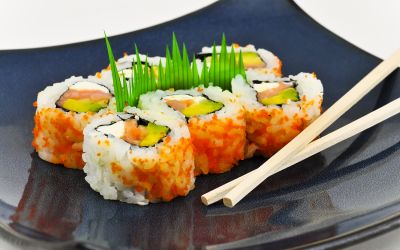
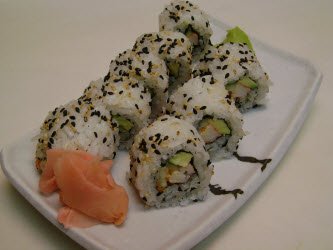
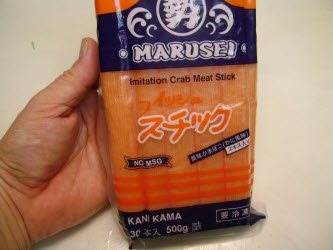
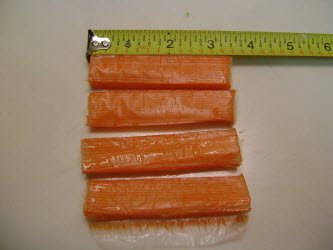
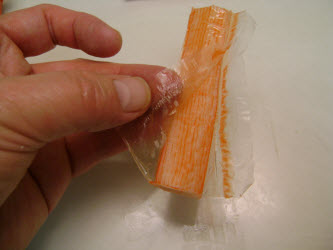
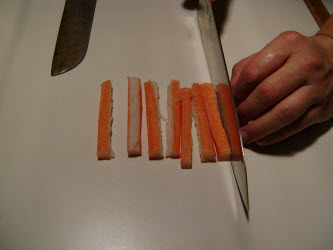
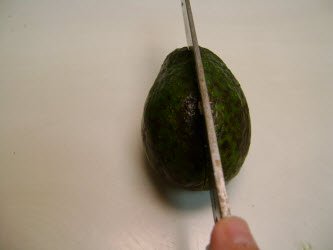
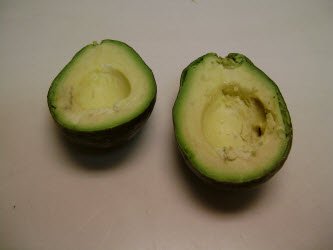
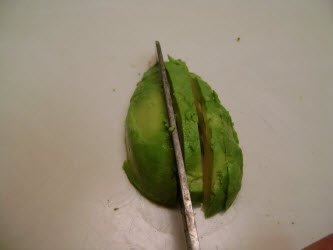
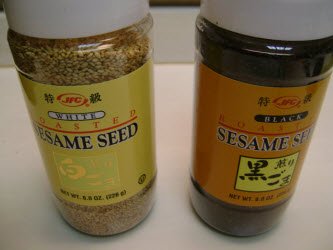
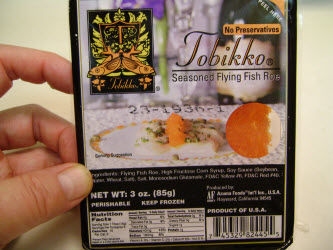
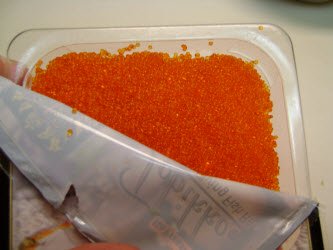
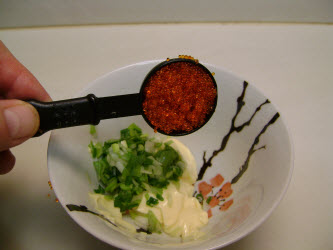
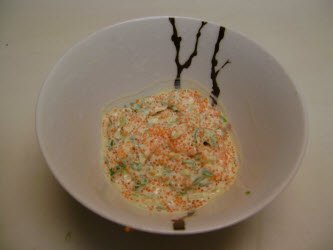
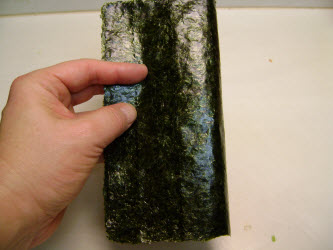
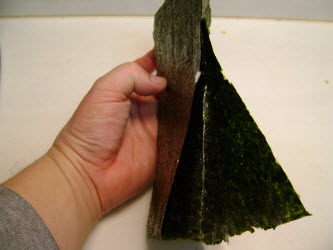
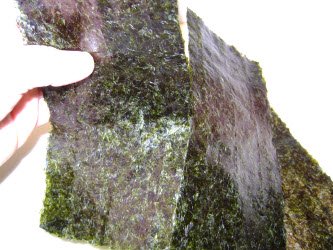
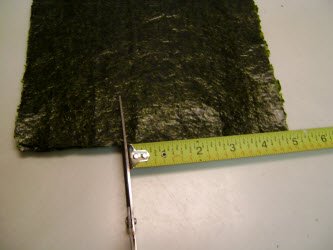
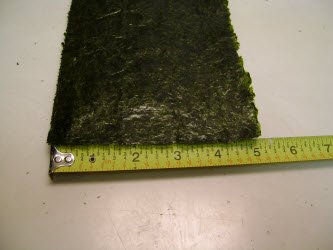
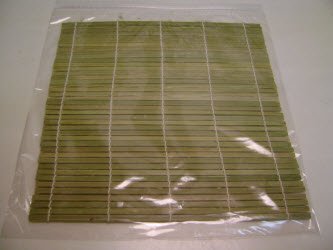
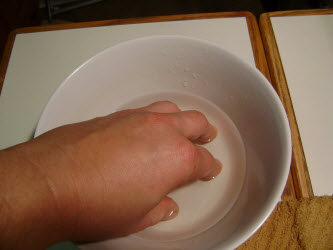
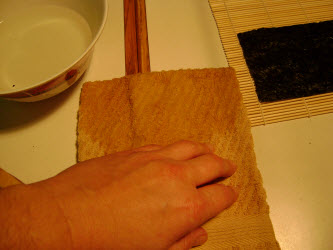
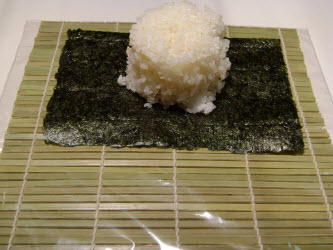
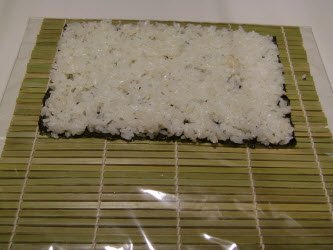
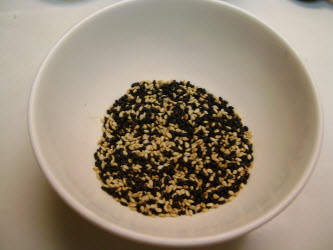
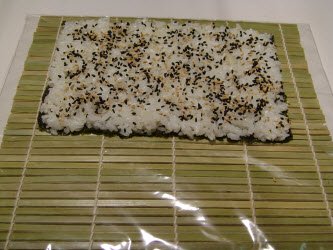
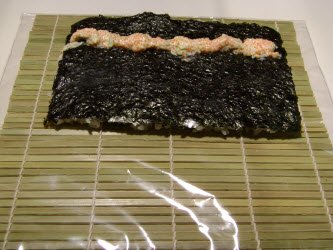
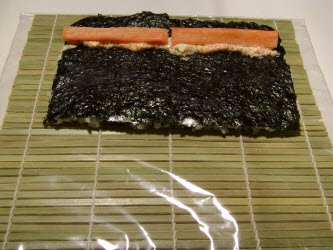
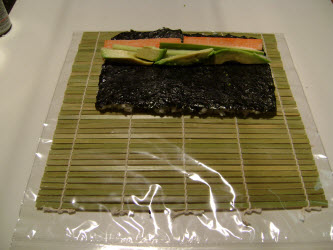
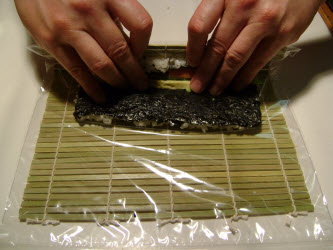
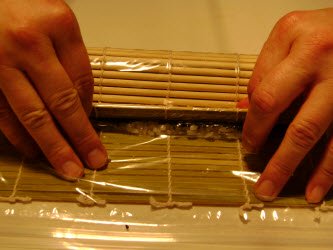
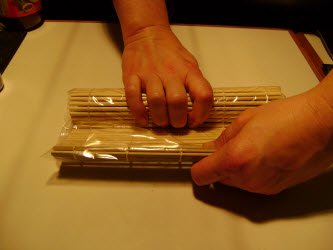
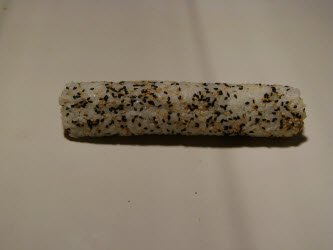
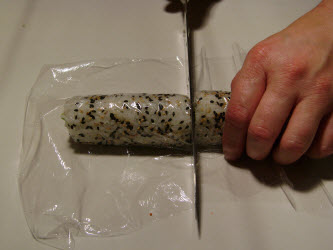
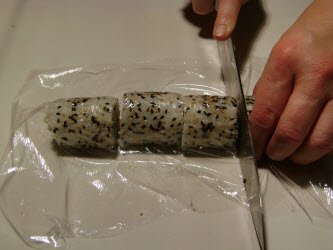
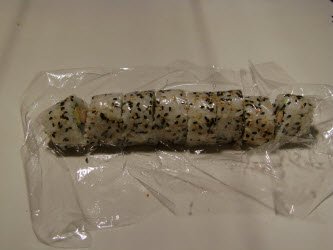





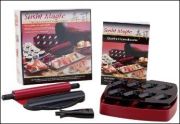

New! Comments
Have your say about what you just read! Leave me a comment in the box below.